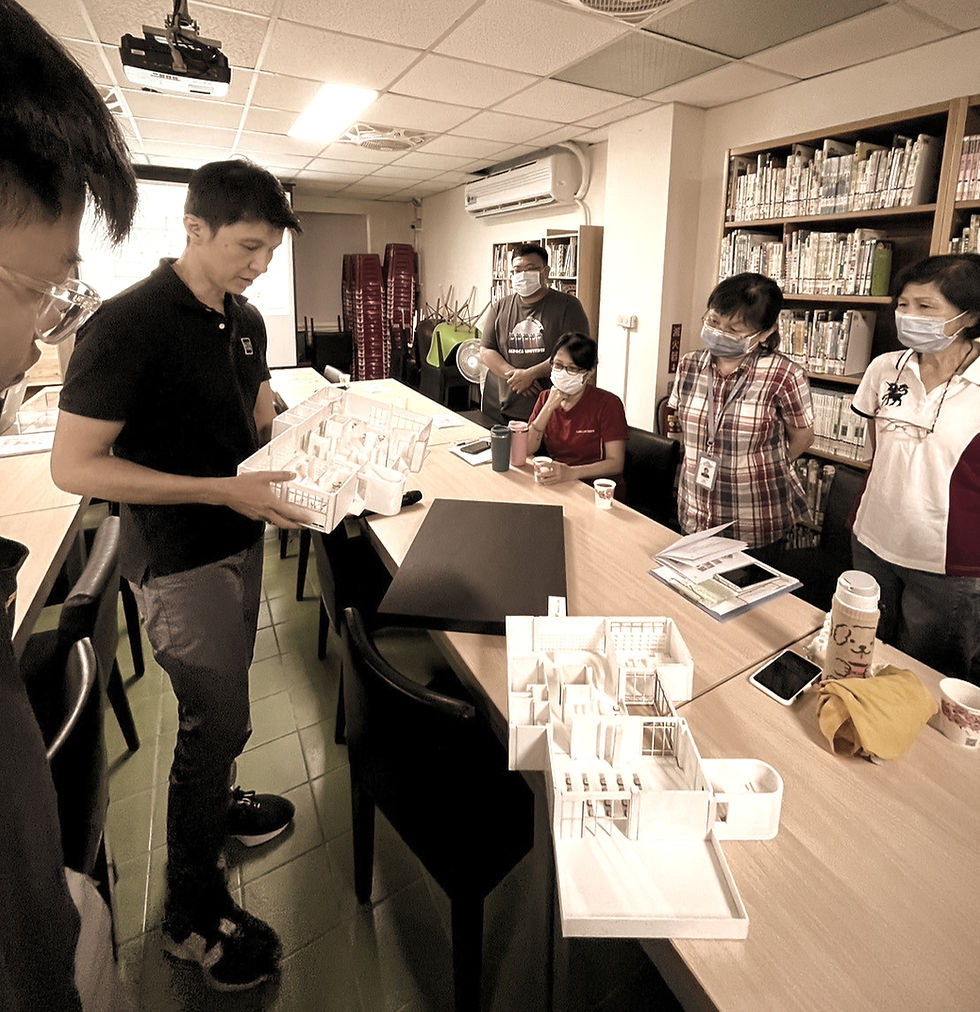Taiwanese spirit
- Howard Chang
- Jul 9, 2021
- 3 min read

Architecture is an art that can concretize abstract spiritual meaning. From the architecture of a place, you can often find clues that represent regional spiritual and cultural symbols. Therefore, many countries in the world attach great importance to their own architectural culture, not only because of the value of its tourism industry, but also the symbolism of cultural spirit. Taiwan is a high-density population and marine culture area. In the past, architectural development tended to be practical. Due to historical fate, Taiwan's architecture and urban environment have formed a diverse and complex situation. Aboriginal people, southern Fujian, Hakka, Western, Oriental, modernism, postmodernism, deconstruction, neo-modern purism and other buildings can be seen here, but they often lack historical or cultural self-evidence and sense of coordination, which is why Taiwan The landscape is often made up of a variety of elements when forced to do so.
In fact, Taiwan's architecture has a very good environment for development, because Taiwan's land itself has a good script: the integration of multiple cultures, simple nationality, strong vitality, and inherently rich natural ecological environment. As long as you can find your own story, you can definitely develop a unique architectural culture.
If we want to explain Taiwan’s inherent characteristics and spirit more specifically, from the perspective of physical geography, Taiwan is an oceanic island, with mountains, hills, plains, streams, coasts and other natural landforms harmoniously integrated in this beautiful land. The subtropical climate suitable for biological growth and habitat has also bred a wide variety of animals and plants. Although some areas have lost their former charm due to overdevelopment, many precious natural resources still maintain their original appearance under deliberate protection.
From a humanistic point of view, Taiwan has different ethnic groups and cultures, such as aboriginal, southern Fujian, and Hakka. Although they have their own characteristics, there are also many customs and habits that have a fusion effect. The new culture generated after the integration of ethnic groups still inherits Taiwan. The spirit of friendliness and tolerance. Few places in the world like Taiwan can gather such diverse ethnic groups and diverse cultures on such a small land at the same time. Such rare characteristics make our new culture more authentic than other countries. "Mixed and match wind", people on this land are constantly adapting to the new products of the fusion reaction, and at the same time, they have shown their tenacious vitality to the changes of the times.
From the perspective of the times, from the early agricultural society in Taiwan to the current technologically advanced situation, the appearance of the entire city and social culture has changed. However, the era does not completely eliminate the old things, but stacks new changes on the original heritage in a cumulative manner. In response to the ever-changing society, the city has also produced new types of so-called "temporary" buildings. Such changes do make the city seem chaotic and out of control, but some scholars think backwards and think that "temporary" may be the basis of the next wave of creativity. If you can find your own characteristics from various differences, the thinking of challenging beauty with ugliness is also a combination of architecture. The show of art.
Even if communication in the online world becomes more and more convenient, the importance of physical space in the city or people's psychology has not diminished as a result. Space is still a place for people to meet and a field for communication of ideas. Many old cultural exchanges and new cultures are catalyzed by the gathering and frequent interaction of people in the space. Therefore, the use of innovative thinking to shape architectural space has become a way to express the spirit of Taiwan. How to evoke the possibility of regional spirit and humanistic thinking on space planning requires more thinking and agitation to achieve. The so-called awakening of the "Taiwanese spirit" does not actually conflict with the pace of urban modernization, because humanistic thinking is currently the pillar of the idea of promoting urban modernization in various countries. At the same time, storing, spreading and innovating culture has been regarded as the redevelopment of cities. Fine follow. In the context of global competition, the same but unfamiliar "modern" buildings in a thousand cities are constantly repeated and copied. At present, the redevelopment of a city not only needs to improve its own living environment and conditions, but also needs to face the same development positioning in different regions of the world. Or resource-specific urban competition challenges. Therefore, I discovered the inherent humanistic characteristics of the city and made it appear outside, and implemented storage, spread and innovation in the urban and architectural dimensions of Taiwan’s spiritual characteristics, in order to find suitable and irreplaceable ones under globalization. The foothold will have more significance and urgency of the times.

.jpg)




Comments